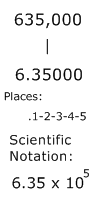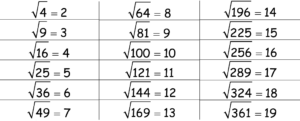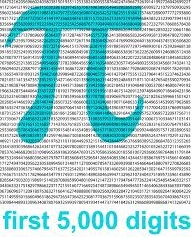What is Interval Notation for Inequalities?
You will need to learn which symbols to use to express interval notation for inequalities, including the infinity symbol.
On your exam, you may need to express an inequality or number line in interval notation.
Interval Notation for Inequalities – Quiz
Instructions: Answer the questions in the quiz that follows. You should view the interval notation example problems in the next section first.
[WpProQuiz 37]
Interval Notation – How to Use the Symbols
We use the following symbols for interval notation:
Greater than and less than
We use the symbols ( ) and [ ] in interval notation.
[ and ] → use for ≤ or ≥
( and ) → use for < or >
Infinity
∞ → use for infinity
–∞ → use for negative infinity
Solid dots
Solid dots on a number line are for ≤ and ≥, so when you see
solid dots → use [ or ]
Open dots
Open dots on a number line are for < and >, so when you see
open dots → use ( or )
You also need to use ( or ) next to the infinity symbol.
Whether we use the opening bracket or parenthesis, or alternatively the closing bracket or parenthesis, depends on the position of x.
Interval Notation Examples
Let's look at some examples of how to write inequalities in interval notation.
You will notice that the numbers and symbols in interval notation are written in the same order as a number line.
So, the lowest value for the inequality is placed on the left side in each set of parentheses or brackets.
Example 1:
x > 9 is written as (9 , ∞)
The number line for the notation in example 1 would show an open dot on 9 and a line with an arrow on the end of it, going from the dot to the right towards infinity.
Example 2:
x < 10 is written as (–∞, 10)
The number line for the notation in example 2 would show an open dot on 10 and a line with an arrow on the end of it, going from the dot to the left towards the negative numbers and negative infinity.
Example 3:
x ≥ 8 is written as [8 , ∞)
The number line for the notation in example 3 would show an solid dot on 8 and a line with an arrow on the end of it, going from the dot to the right towards infinity.
Example 4:
x ≤ –7 is written as (–∞, –7]
The number line for the notation in example 4 would show an solid dot on –7 and a line with an arrow on the end of it, going from the dot to the left towards the negative numbers and negative infinity.
Example 5:
–3 ≤ x ≤ 6 is written as [–3 , 6]
The number line for the notation in example 5 would show a solid dot on –3 on the left and another solid dot on 6 at the right, with a line going between them.
Example 6:
–2 < x ≤ 4 is written as (–2 , 4]
The number line for the notation in example 6 would show an open dot on –2 on the left and a solid dot on 4 at the right, with a line going between them.
Example 7:
9 < x < 12 is written as (9, 12)
The number line for the notation in example 7 would show an open dot on 9 on the left and another open dot on 12 at the right, with a line going between them.
Example 8:
–5 ≤ x < 8 is written as [–5 , 8)
The number line for the notation in example 8 would show a solid dot on –5 on the left and an open dot on 8 at the right, with a line going between them.
Using the infinity symbol
As you can see from the interval notation examples, we need to use the infinity sign when we have an inequality with only one value.
That is because for inequalities with one value and with the "greater than" symbol (such as x > 9), there are an infinite amount of positive values that are greater than 9.
Similarly, for inequalities with one value and with the "less than" symbol (such as x < 10), there are a finite amount of positive values but an infinite amount of negative values that are less than 10.
Answering Exam Questions
You may see the following types of questions on your algebra test:
Writing interval notation from inequalities or number lines
Preparing inequalities or number lines from interval notation
You may want to see our posts on number lines and inequalities.
Further Practice
You may also want to see our posts on graphing and quadratics.



















